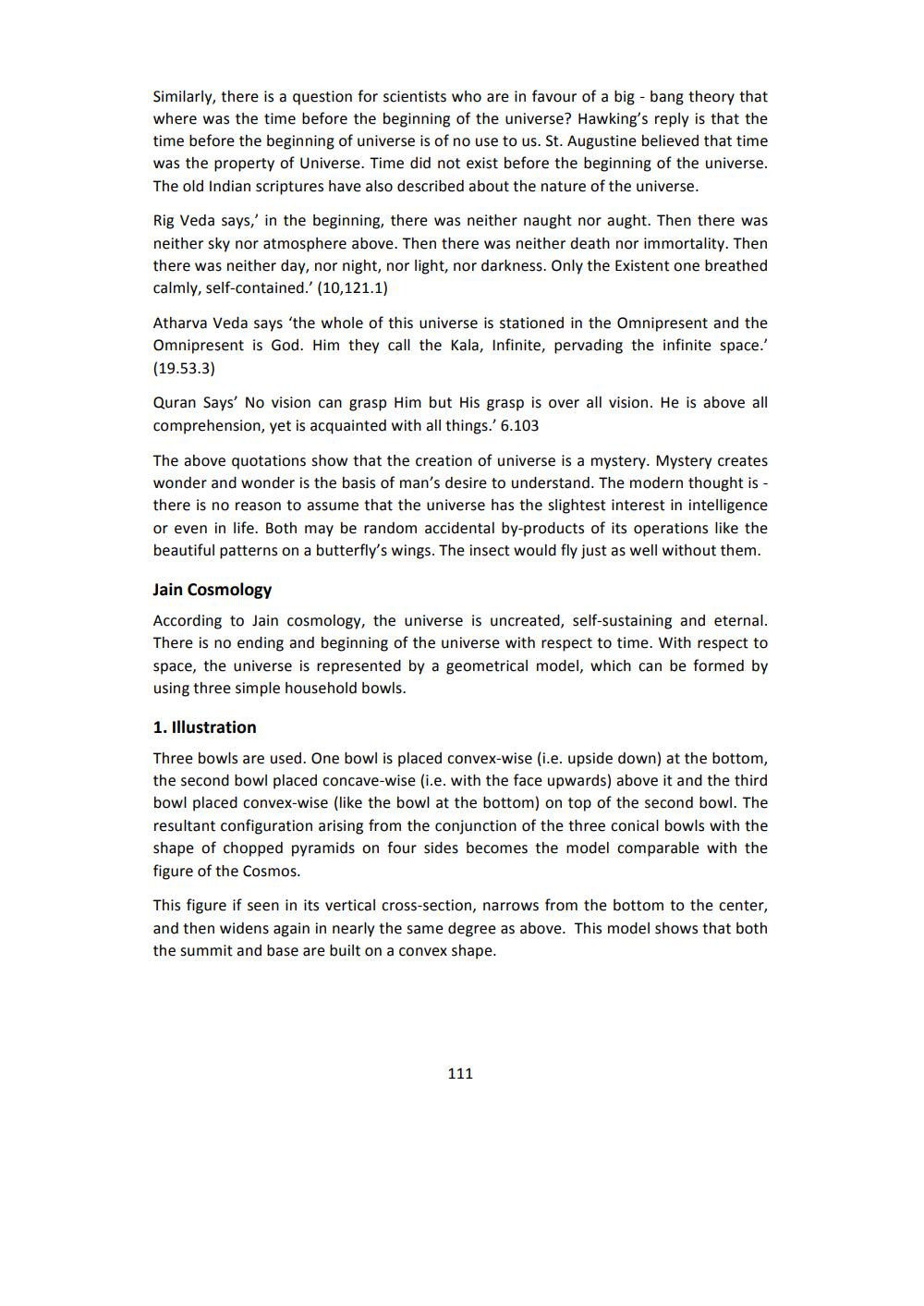________________
Similarly, there is a question for scientists who are in favour of a big-bang theory that where was the time before the beginning of the universe? Hawking's reply is that the time before the beginning of universe is of no use to us. St. Augustine believed that time was the property of Universe. Time did not exist before the beginning of the universe. The old Indian scriptures have also described about the nature of the universe.
Rig Veda says,' in the beginning, there was neither naught nor aught. Then there was neither sky nor atmosphere above. Then there was neither death nor immortality. Then there was neither day, nor night, nor light, nor darkness. Only the Existent one breathed calmly, self-contained.' (10,121.1)
Atharva Veda says 'the whole of this universe is stationed in the Omnipresent and the Omnipresent is God. Him they call the Kala, Infinite, pervading the infinite space.' (19.53.3)
Quran Says' No vision can grasp Him but His grasp is over all vision. He is above all comprehension, yet is acquainted with all things.' 6.103
The above quotations show that the creation of universe is a mystery. Mystery creates wonder and wonder is the basis of man's desire to understand. The modern thought is - there is no reason to assume that the universe has the slightest interest in intelligence or even in life. Both may be random accidental by-products of its operations like the beautiful patterns on a butterfly's wings. The insect would fly just as well without them.
Jain Cosmology According to Jain cosmology, the universe is uncreated, self-sustaining and eternal. There is no ending and beginning of the universe with respect to time. With respect to space, the universe is represented by a geometrical model, which can be formed by using three simple household bowls.
1. Illustration
Three bowls are used. One bowl is placed convex-wise (i.e. upside down) at the bottom, the second bowl placed concave-wise (i.e. with the face upwards) above it and the third bowl placed convex-wise (like the bowl at the bottom) on top of the second bowl. The resultant configuration arising from the conjunction of the three conical bowls with the shape of chopped pyramids on four sides becomes the model comparable with the figure of the Cosmos.
This figure if seen in its vertical cross-section, narrows from the bottom to the center, and then widens again in nearly the same degree as above. This model shows that both the summit and base are built on a convex shape.
111




